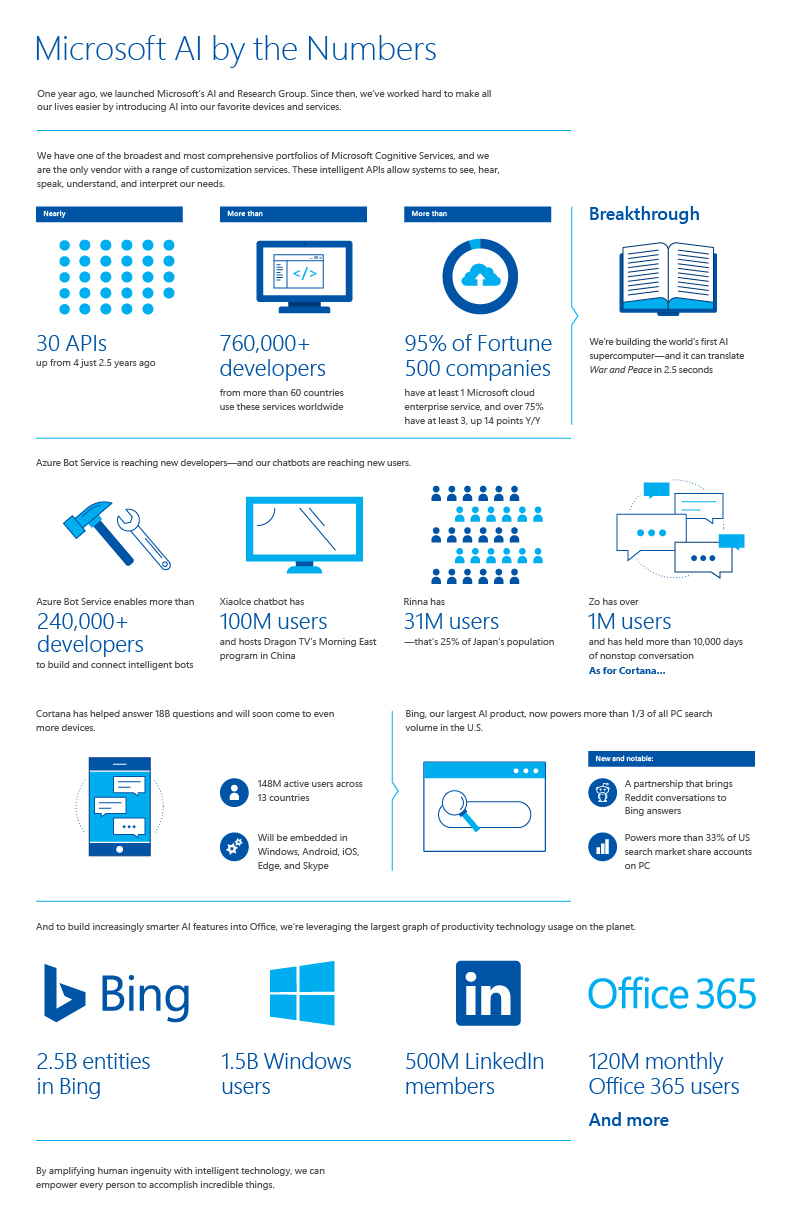The concept of Artificial Intelligence (AI) is not new. In fact, it stretches back to 1950 when early computing pioneer Alan Turing famously posed the question “Can Machines Think?” and it would be another 6 years, in 1956, before the term “artificial intelligence” was first used.

So it has taken nearly 70 years for the right combination of factors to come together to move AI from concept to an increasingly ubiquitous reality. And there are 3 innovation trends driving its acceleration and adoption right now.
1.) The first is Big Data. The explosion of Internet-connected devices, sensors and objects has expanded exponentially the amount of data the world is now producing. In this increasingly digital era, data is the “new oil”– a source of value and sustainable competitive advantage.
2.) The second factor is ubiquitous and powerful Cloud computing. Today, anyone with an idea and a credit card can access the same computing power that, traditionally, only global multinationals or governments have possessed. Cloud computing is democratizing technology and accelerating innovation on a global scale.
3.) The third factor driving AI capabilities is breakthroughs in software algorithms and Machine Learning that can identify sophisticated patterns implicit within the data itself. If data is the new oil, Machine Learning is, perhaps, the new combustion engine.
Industry experts refer to the way in which AI will impact our lives as an “invisible revolution”. This refers to its ubiquity. AI will be everywhere—powering your online recommendation engine, acting as a virtual assistant chatbot for your bank account or travel agent, personalizing your newsfeed or guarding your credit card against fraud. AI will be more pervasive—and yet less invasive—than any previous technology revolution.
In particular, AI will be embedded seamlessly into existing, well-established products and services to enhance their capabilities. For example, with a small piece of AI tech called Microsoft Presentation Translator, anyone can help overcome any language barriers as PowerPoint can show real-time subtitles in more than 60 languages, simultaneously as they speak, during their presentations.
In business, AI will be used by most companies for at least some part of the value chain either in research and development, design, logistics, manufacturing, servicing or customer engagement. In fact, leading IT industry analyst IDC believes that by next year, 40-percent of digital transformation initiatives globally will be supported by AI capabilities.
Take, for example, Mitsubishi Fuso Truck and Bus Corporation (MFTBC), an 85-year-old Japanese auto manufacturer, which has given itself just two years to become a “100-percent digital operation” complete with cloud-based capabilities in AI, the Internet of Things (IoT), and Mixed Reality (MR).
The future of AI burns brightly and 2018 is the year that will establish a solid foundation for the mass adoption of this exciting and vital technology.
Leading platform and productivity company Microsoft is the mobile-first, cloud-first world, and its mission is to empower every person and every organization on the planet to achieve more
Through its local counterpart Microsoft Philippines, the company has been constantly bringing innovation and making its technology available to Filipino businesses and individuals since 1995.

